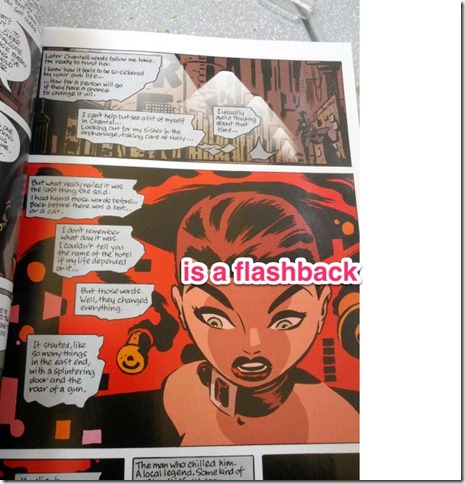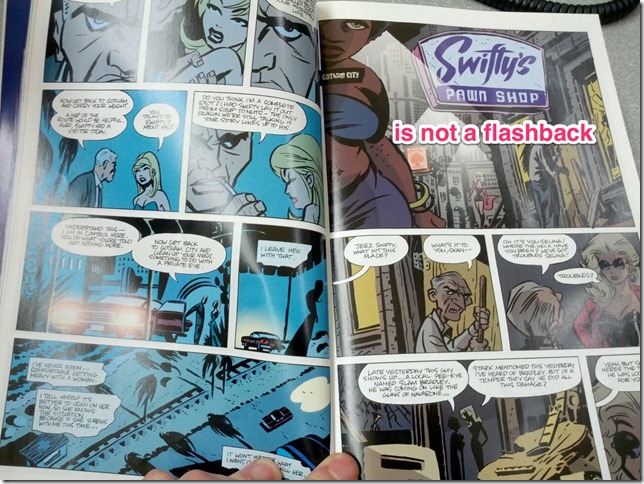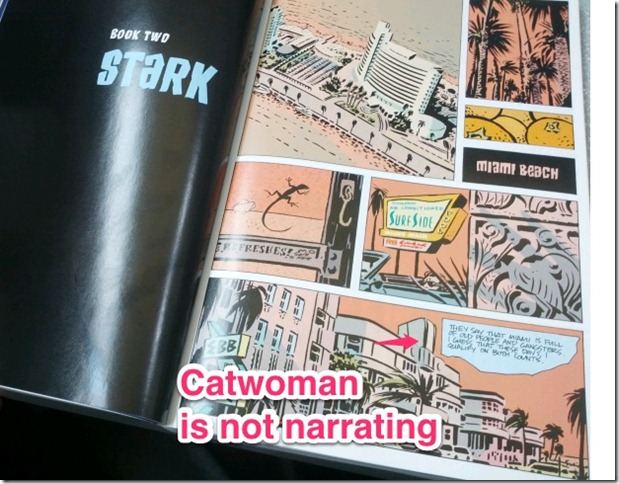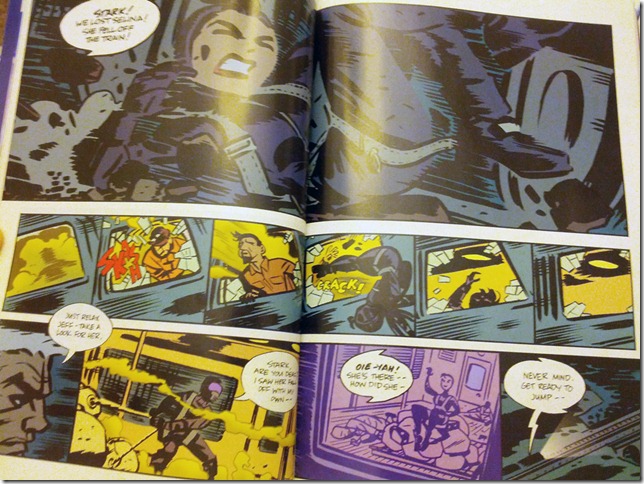Catwoman: Selina’s Big Score
Storytellers: Darwyn Cooke with Matt Hollingsworth
Publisher: DC Comics
Year of Publication: 2002
Page Count: 96 Page Graphic Novel (reprinted in Catwoman Volume 1)
What I learned about Writing/Storytelling:
I confirmed for myself two existing biases in regard to what not to do:
1) Don’t assume changing the color for your flashbacks in any way helps identify them as flashbacks. Colors change with scenes and may be consciously invisible to the reader.
2) When introducing the concept of narration in your story, show the character who is narrating on panel. You would think that the narrator in a book called Catwoman would be Catwoman, but the book switched narrators with the chapter change, and this was no longer the case. It took me a moment to figure that out:
What I learned about art/storytelling:
I’m not sure. The art didn’t work for too well for me. I think it’s odd that Cooke does big panel closeups, and I think he does too many closeups in general. There’s a big panel closeup in the flashback image above, which seemed to me like an odd storytelling choice. Later in the book, this bit had me scratching my head:
Part of the problem might be I don’t believe you can jump back on a moving train after falling off, which seems to be what is happening here.
Recommendation: C
Notes/Reviews/Synopsis:
Basically, it’s a crime fiction heist story. Catwoman does not appear in costume, except briefly in flashback. She is poorly motivated and says she recently came back from the dead, whatever the heck that means. It’s clearly a reference to whatever was going on in other Batman books at the time, but is not explained.
I didn’t really read this in the spirit I was supposed to. When Selina mentions a sister, I expected a flashback or some payoff to the reference, but there is none, the only reason the sister is mentioned is because it’s a continuity reference to some previous Catwoman story.
Similarly, when Selina flashes back to the time she was a prostitute, this isn’t because Darwyn Cooke has anything to say about prostitution, or what it’s like to be a prostitute, or the human condition in general, but because Selina was a prostitute in an 80s Frank Miller comic.
The ending pulled together a bit better, focusing on doomed love and doomed criminals. The book began at a more leisurely pace.



